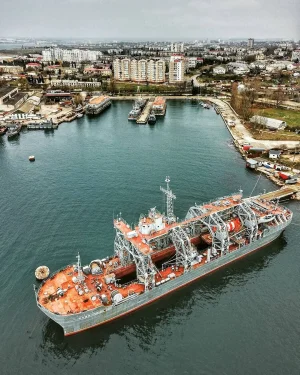USS Constitution, also known as Old Ironsides, is a wooden-hulled, three-masted heavy frigate of the United States Navy. She is the world's oldest commissioned naval vessel still afloat. She was launched in 1797
BOSTON (July 4, 2014) USS Constitution fires a 17-gun salute near U.S. Coast Guard Base Boston during the ship's Independence Day underway demonstration in Boston Harbor. Constitution got underway with more than 300 guests to celebrate America's independence. (U.S. Navy photo by Seaman Matthew R. Fairchild/Released)
The earliest known photograph of
Constitution, undergoing repairs in 1858.
USS Constitution in dry dock at the Philadelphia Navy Yard, 1874.
USS Constitution as a barracks ship ca. 1905 with the caisson gate for Dry Dock No. 1 at the Charlestown Navy yard floating in the foreground
USS Constitution passing through Gaillard Cut on her Atlantic to Pacific transit of the Panama Canal, 27 December 1932. Alongside is the Canal tug Gorgona.
USS Constitution fires her guns in salute while underway in Massachusetts Bay, escorted by the frigate USS Halyburton (FFG-40) (center) and the destroyer USS Ramage (DDG-61) (right), as the United States Navy's "Blue Angels" pass overhead. Commissioned on 21 October 1797, Constitution set sail unassisted for the first time in 116 years. 21 July 1997.
Boston, Mass. (July 30, 2005) – U.S. Navy Cmdr. Thomas C. Graves and Executive Officer Lt. Brad Coletti look on during USS Constitution change of command ceremony. Graves became the 69th commanding officer of the historic vessel, relieving Cmdr. Lewin C. Wright in the at-sea ceremony. The occasion marked the first in which Graves wore his 1813-era Naval officer’s uniform aboard the ship. U.S. Navy photo by Journalist 1st Class Matt Chabe.






































